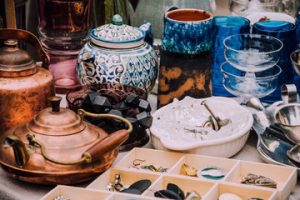Home » Articles posted by Jada Shelton
Author Archives: Jada Shelton
Common Cabinet Refinishing Mistakes and How to Avoid Them
Cabinet Refinishing San Jose CA is an intricate process that requires patience and skill. Trying to cut corners will often yield results that are less than desirable.
For example, rushing through drying times between coats can result in tacky surfaces. And using the wrong paint sheen will make cabinets look old and unattractive.

Poor Preparation
One of the biggest mistakes that people make with cabinet refinishing is skipping or rushing through the preparation process. This includes cleaning, sanding, and priming the surface before painting. This is a necessary step for ensuring that the new paint or stain adheres to the existing surfaces and reduces the chance of chipping and peeling in the future. Be sure to thoroughly clean surfaces using a degreaser such as TSP (trisodium phosphate) and sand with fine-grit sandpaper for a smooth, professional finish.
Another common mistake is not removing all hardware from cabinets before refinishing. This can result in uneven paint coverage and a messy look. Also, if the wrong type of paint is used for the project, the results can be disastrous. It’s best to use a quality oil-based or water-based primer and a high-quality acrylic or polyurethane paint made specifically for cabinet surfaces.
Many people also choose the wrong color for their refinished cabinets. This can clash with the surrounding décor or simply be too bold for the room. Lastly, some people forget to seal their cabinet refinishing project with a protective topcoat, leaving it vulnerable to moisture and stains. It’s important to invest in a high-quality topcoat like ICRO for maximum durability.
Failing to Sand Properly
Cabinet painting may seem like a simple, straightforward project, but it requires proper preparation. Skipping this step leads to a messy and sloppy job that is difficult to fix later. Cleaning, sanding, and taping are all essential in creating a smooth surface that will hold up to everyday wear and tear.
Failing to properly sand the surface of the cabinets can lead to poor adhesion of paint or stain. This results in bubbling and peeling. To avoid this, you should sand all surfaces that will be refinished before applying any new material. This can be accomplished by using coarse-grit sandpaper or an electric sander.
Choosing the wrong type of paint or stain is another common mistake that can detract from your overall project. It’s important to choose high-quality products designed for refinishing rather than inferior wall paints. Using low-quality products can result in chipping and other issues down the road.
Rushing through the drying process is also a common error that can lead to smudges or tacky surfaces. Always allow each coat of stain or paint to fully dry before applying the next one. This can take hours, depending on the product’s specifications and environmental conditions.
Choosing the Wrong Primer
Cabinet painting is a big project with a lot of steps to get right. One mistake that many people make is choosing the wrong primer. Primers are essential to creating a clean surface for the paint to adhere to and providing a barrier against stains and old finishes. Using the wrong type of primer can result in flaking, bubbling and chipping. Always use a high-quality primer designed for the material of your cabinets.
Another common mistake is failing to properly sand the cabinets before applying the primer or paint. This step is crucial for a quality finish, and it’s often rushed or skipped altogether. Not sanding the cabinets will create a sticky, caked-on finish that looks unattractive and won’t hold up to normal cleaning products.
Finally, it’s important to choose the right paint sheen for your cabinets. While matte paint may be trendy, it’s not very durable in a kitchen and can collect smudges quickly. Opting for a glossy or semi-gloss paint will provide a more durable finish that’s easier to clean and resists smudges.
Cabinet refinishing can be a rewarding DIY project, but it’s not without its challenges. By avoiding some of these common mistakes, you can ensure that your refinishing project goes off without a hitch. Whether you’re looking to update your kitchen or bathroom, these tips will help you achieve the beautiful results that you’re after.
Choosing the Wrong Products
Cabinet refinishing is a complicated process, and it requires precision and the right materials for the best results. Choosing the wrong products can ruin your finished project and result in a less-than-stellar final appearance.
While some homeowners try to cut corners by using a low-quality paint or a product that’s not intended for the job, this can cause serious issues with the appearance of your cabinets. Cheaper paints are more likely to leave streaks or drips, and they’re also more susceptible to chipping and peeling. In addition, a product that’s not intended for cabinet refinishing may be unable to protect the wood or withstand repeated cleaning and exposure to harsh chemicals.
Another common mistake people make is using the wrong type of paint. If you’re attempting to change the color of your cabinets, it’s vital to use a stain-blocking bonding primer that will prevent bleed-through and ensure that the topcoat adheres to the surface. Otherwise, the new coat of paint may flake or peel quickly, and you’ll have to re-paint sooner than you would have hoped.
It’s also important to allow the appropriate amount of time for each coat of paint or primer to dry before applying a second layer. Rushing through these steps can lead to inconsistent results, such as smudge marks or uneven surfaces that are more difficult to clean. Always follow the recommended drying times on the label of each product you’re using for optimum results.
Rushing Through Drying Times
It’s crucial to take the time to sand your cabinets properly and use a high-quality primer before painting. This will ensure that the new paint or stain adheres well to the surface and reduces the risk of chipping and peeling in the future. Skipping this step can result in a sticky, caked-on finish that looks unattractive and isn’t very durable.
Not following the drying times listed on the paint can can also ruin your results. Some paints need a few days to dry fully, so it’s important to be patient and allow each coat to cure before applying another one. It’s also crucial to choose a quality application tool that can deliver an even coat of paint. A foam roller is ideal for flat surfaces, while angled brushes are perfect for detailed work.
Finally, don’t forget to replace your hardware after your cabinet refinishing project is complete. Using old or mismatched hardware can undermine your beautiful new finish and create a lack of cohesion in your design. Be sure to choose hardware that complements the color of your new cabinets for a cohesive look.
Not Taking Care of Surfaces
When you paint your cabinets, you want them to look their best. This is why it’s important to use good applicators for each stage of the process. Foam rollers are ideal for flat surfaces, while angled brushes work well to get into tight corners and details. Using high-quality brushes will save you time and money in the long run, as you’ll be able to achieve better results with less effort.
When it comes to staining, it’s also important to use high-quality products. Cutting corners here will result in a poor finish that bubbles or peels quickly. Always test the product on a small area of your cabinet doors before committing to a full project.
Finally, it’s vital to prepare the workspace thoroughly. This includes emptying the cabinet boxes and removing hardware, cleaning the surfaces with a degreaser, and sanding them to ensure an even texture that adheres well to new coats of stain or paint. It’s also essential to use adequate ventilation to avoid breathing in dust and chemical fumes.
Cabinet refinishing isn’t an easy task. It takes time and patience to get the job done right. Understanding some of the most common mistakes can help you avoid them and enjoy a seamless cabinet transformation. With a little knowledge, you can give your kitchen or bathroom a beautiful new look without the cost and hassle of a major renovation.
The Importance of an Eye Care Center
For many people, eye care is a vital part of their health. It is important to visit an eye doctor regularly to prevent serious vision problems from developing.

It has been found that expanding insurance coverage for medical eye exams does not automatically increase access to these services. Instead, novel educational and delivery models are needed to facilitate access for at-risk populations. Contact Maryland Eye Care Center now!
Eye exams are an important part of overall health care. They can help identify problems in their early stages and allow doctors to take corrective measures before vision loss occurs. Eye diseases that aren’t diagnosed in time can lead to permanent blindness. A comprehensive dilated eye exam is the only way to catch and treat these conditions.
Eye care centers can offer eye exams from optometrists and ophthalmologists. The best choice depends on the type of exam you need, and whether your condition requires surgery. Generally, optometrists are better for routine eye health checks, while ophthalmologists are the right choice for eye surgeries and other more serious issues. In addition to eye exams, eye care centers also offer a wide range of eyewear, including sunglasses and contact lenses.
The most common store-based eye care centers are Walmart, Target Optical and Sam’s Club. These locations tend to be less expensive than other options, and some even offer free eye exams. However, it is important to remember that these stores do not have the same training as an eye doctor. These tests may not accurately reflect the results of a thorough eye exam by an ophthalmologist or optometrist.
A comprehensive eye exam should include tests of your visual acuity, which evaluates how well each eye sees distance and near objects. It should also include a cover test to assess how each eye works independently of one another and tests of depth perception, color vision and peripheral (side) vision. The eye doctor may also check the shape of your cornea and optic nerve with a slit lamp, and he or she might use digital photos or optical coherence tomography (OCT) to detect changes in your retina or optic nerve.
Contact lenses
Contact lenses are a great way to see clearly without having to wear glasses. They are also very comfortable and can be worn in almost any situation. However, they are not the right option for everyone. It is important to consider the lifestyle and preferences of each person to see if contacts are right for them.
Before you put your contact lens in, it is important to wash and rinse your hands thoroughly. This helps to ensure that you do not get any dust or debris on your eye. It is also a good idea to remove any contacts you have been wearing for more than the amount of time recommended by your doctor, as this can increase the chances of getting an eye infection.
The first contact lenses were made from polymethyl methacrylate (PMMA, or Perspex/Plexiglas). These were referred to as hard lenses. While PMMA was durable, it allowed no oxygen to pass through the conjunctiva and cornea, causing a number of adverse, often serious clinical effects. By the late 1970s, improved rigid materials that were also oxygen-permeable were developed. These are now called Rigid Gas Permeable or RGP lenses.
Putting in and taking out contact lenses can be intimidating at first, as it involves touching the surface of your eyes. But with practice, it can become a quick and easy process.
There are many different types of contact lenses available, each designed for a particular purpose. You can find out what type is best for you by examining your prescription, which contains plus or minus signs, followed by numbers. These indicate the shape of the contact lens, which will correct your vision problems.
Eyeglasses
Eyeglasses are lenses set in frames that you wear in front of your eyes. They’re used to help with vision problems like nearsightedness, farsightedness, and astigmatism. Eyeglasses are a tried-and-true way to correct vision issues. They’re usually less expensive than contact lenses and are available in a wide range of frames to suit your style. Eyeglasses are also easy to use and don’t require special cleaning solutions.
Eyeglasses work by bending light beams that enter your eyes so they converge on your retina at the right distance. This makes it easier to see things that are close up, far away, or at varying distances. They can also be used to correct other conditions, like cataracts, macular degeneration, and glaucoma.
Most eyeglasses are made of plastic or glass. They may be tinted or specialized to reduce glare from light sources, such as headlights or car headlights. They can also have other features, such as antireflective coatings, which minimize the glare caused by light reflecting off of surfaces inside your eye.
The lenses of eyeglasses are customized to your prescription, which tells the optician how much you need to correct your vision. They can be single-vision lenses, which correct one issue, or multifocal lenses, which treat both near- and farsightedness at the same time. Some types of multifocal lenses have bifocals, while others have trifocals.
Some people may have trouble adapting to eyeglasses, especially if they are a new type of lens. They can also be more expensive than contacts, and they must be stored properly to prevent them from getting lost or damaged. Luckily, there are many resources to make it possible for almost everyone to get the eyeglasses they need to keep their vision healthy.
Scleral lenses
Scleral lenses vault over the cornea and rest entirely on the conjunctiva covering the white part of the eye (sclera). This space is filled with sterile saline solution that functions as a fluid reservoir. The fluid serves to hydrate the cornea and act as a cushion to protect it and facilitate healing of ocular surface disease.
Because scleral lenses never make contact with the eye’s cornea, they are less likely to cause irritation or dislodge during wear as may be the case with other types of contact lenses. They also provide a shield from debris and dust. These lenses are often prescribed for dry eye disease, keratoconus and refractive error associated with ocular surface disorders.
The large size of scleral lenses also provides the added benefit of protecting the ocular surface from harmful substances such as dirt, dust and allergens. For this reason, these lenses are frequently worn by patients who work outdoors or lead active lifestyles.
To ensure a custom fit, your doctor will create a digital map of the cornea through a process called corneal topography. This allows them to precisely calculate the amount of light needed for your eyes to focus properly, which is especially important if you have an irregularly shaped cornea.
While scleral lenses are more comfortable to wear than RGP lenses, they require special care. You will need to follow your eye doctor’s instructions for insertion and removal, as well as how often you should replace them. In addition, you will need to use daily cleaners or multipurpose gas permeable solutions to clean and disinfect your lenses. Scleral lenses can last for two to five years with proper care and cleaning.
Eye surgery
If you have a condition that requires surgery, your eye care center can perform it. Your doctor will take steps to make sure your eyes are healthy and that you understand the procedure’s risks and benefits. This includes a complete eye exam and tests to determine the shape of your cornea and how your pupils react in light and dark. You will also sign a consent form to have the surgery.
The surgeon will use a laser to change the shape of the cornea, which will reduce your need for glasses or contact lenses. The procedure is called LASIK. During the surgery, the physician will fold back a thin flap on the surface of the cornea and then use an excimer laser to remove tissue from the inside of the cornea. This reshapes the cornea so that light rays are correctly focused on the retina.
After the procedure, you will return to your appointment for a follow-up. During this visit, your doctor will take the shield off your eye and examine the results.
If you have any pain or discomfort after the surgery, call your doctor right away. Your doctor will prescribe medication and give you instructions for your recovery.
An ophthalmologist is a medical doctor who has gone to medical school and completed a residency in ophthalmology. They are trained to diagnose and treat all kinds of eye problems, including cataracts and glaucoma. Some ophthalmologists choose to specialize in one of the major subspecialties in medical or surgical eye care. This is called a fellowship. This added training allows an ophthalmologist to take care of patients with more complex or specific conditions in certain areas of the eye and in particular groups of patients.
